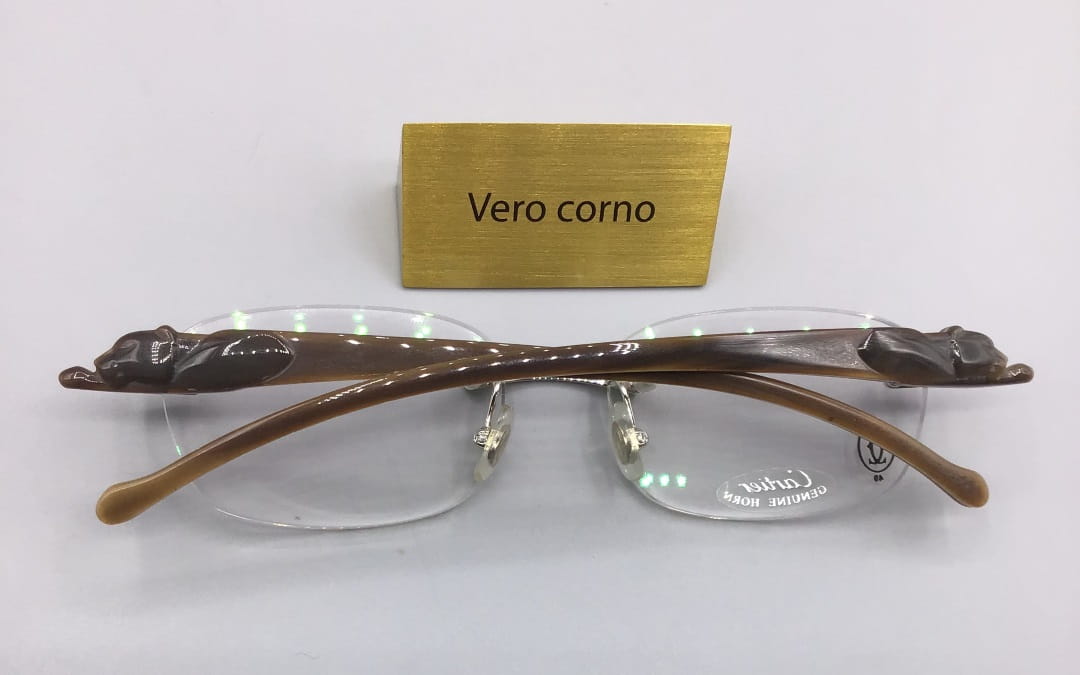The horn is one of the oldest materials used to make eyeglass frames. Its beauty is linked to the variety of colors and the mottles it assumes and the fact that each piece obtained is unique, also thanks to the small irregularities that can distinguish it.
History of the use of the horn
In the search for a material for frames of glasses that was robust, easily workable and light, in the 1500s the horn was used along with the whale fan, the turtle and the leather, especially for the model with arched structure and a flexible bridge that grips on the nose. It seems that the frames were produced by families specialized in the processing of cow horns to produce combs, such as the Venetian “pettenèr”,passed to the production of glasses with the arrival of eyewear.
The processing of the horn
Starting from the preservation of the horns, before processing, a high rate of environmental moisture is required to prevent them from drying out, becoming brittle and cracking.
The horn, which is plastically deformable under the action of heat, is softened with steam to be cut and opened and thus obtain a flat plate. It is dried slowly, so that cracks do not form and once dried it can be processed easily. In fact, although its structure is fibrous, it is workable with the same techniques used for wood: cutting, turning, carving and polishing.
Finally, to prevent the frame from drying out and to enhance its shine, a non-resinous oil, or wax, or thin lacquer is applied.
Source and Features
The horn comes from the keratin horns of animals such as cattle, sheep, goats or buffalo and the most used today are those of the African or Indian buffalo. Animals are not killed for their horns which are a by-product of their slaughter.
The colors can vary a lot, from black, to brown, to light yellow, depending on the animal from which it is made. Even the most technical features such as the more or less hard and fine structure, depend not only on the type of animal but also on how it was bred.
It is very dense and resistant to wear and pressure and is easily workable. In addition, it does not contain allergens so it is ideal for objects that come into contact with the skin such as frames for glasses.
Care and maintenance tips
The horn is a durable material but requires some attention and care to protect it and avoid ageing:
- do not expose to dry and prolonged heat (e.g. sun)
- Never use aggressive detergents or abrasives for cleaning but use a lightly saponata solution and rinse with warm water;
- Do not exert a high flexing stress especially if the temperature is low because the horn is more fragile and may break;
- occasionally you can polish it by rubbing it with cooking oil, camellia or Vaselin.
Conclusions
The horn for the production of eyewear frames has been replaced over time by plastic shards but even today some of the most prestigious eyewear brands produce some pieces in this material, usually with a high cost and a limited number of pieces.

